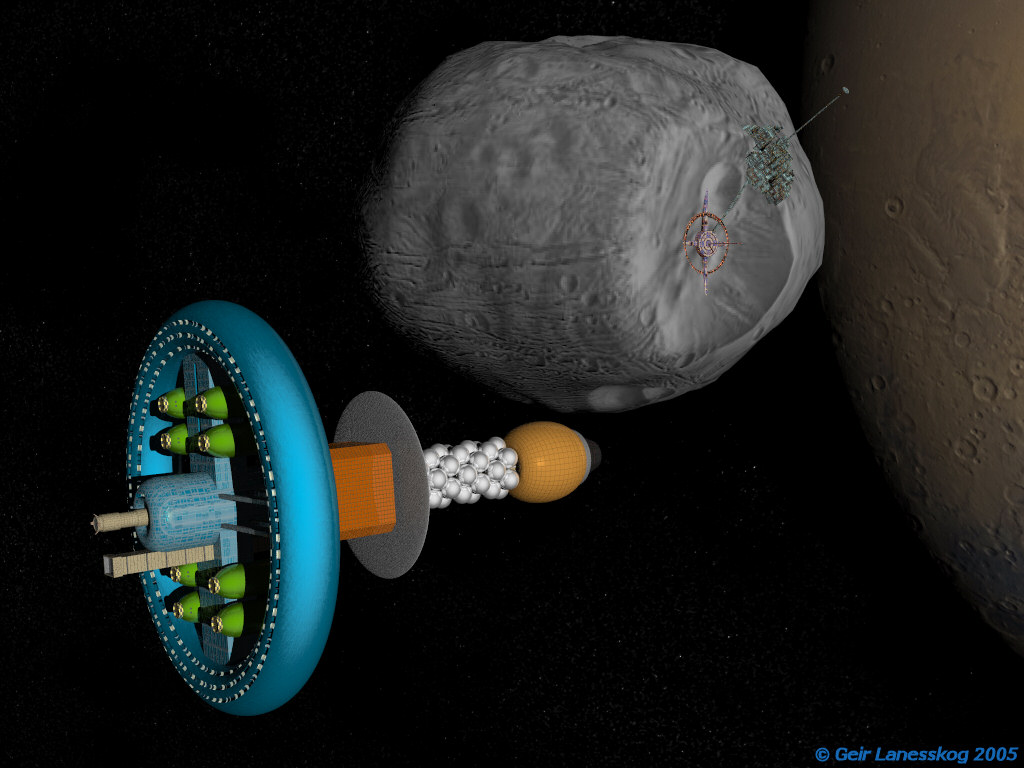
 |
|||||||
|
|
|
|
|
|
|

Arrival At Phobos
The Astro Engineering Consortium FLR100 (“Floor-Cent”) Interplanetary Liner, introduced in 2148, became the most common interplanetary craft produced in the 22nd century, with over 1200 variants produced over 40 years. Many units continued to see service well into the 2240s. Designed for simplicity, the FLR100 produced artificial gravity by rotating its entire hull along its long axis, providing .34g at the edge of its 100 meter diameter passenger torus when spinning at 2.5 rpm. Utilizing a single MSMH-fueled fusion reactor-drive system, the FLR100 could accelerate at .10g with a standard 5,600 mt fuel load and a gross tonnage of 22,400 mt. Reaching full cruising velocity after a day of acceleration, the FLR100 could cross 1AU in just under three weeks. Depending on orbital dynamics, the liner required a transit time of two to seven weeks for the Mars run. It was able to reach Jupiter orbit in about four months, and was occasionally used for voyages deeper into the outer system. The FLR100 was rated and lifeboat-equipped for up 400 passengers and crew. With immigration to Mars and the Asteroids numbering in the hundred per day by the mid 22nd century, daily departures and arrivals were common at major space ports.
All pages and images ©1999 - 2005
by Geir Lanesskog, All Right Reserved
Usage Policy
![]()